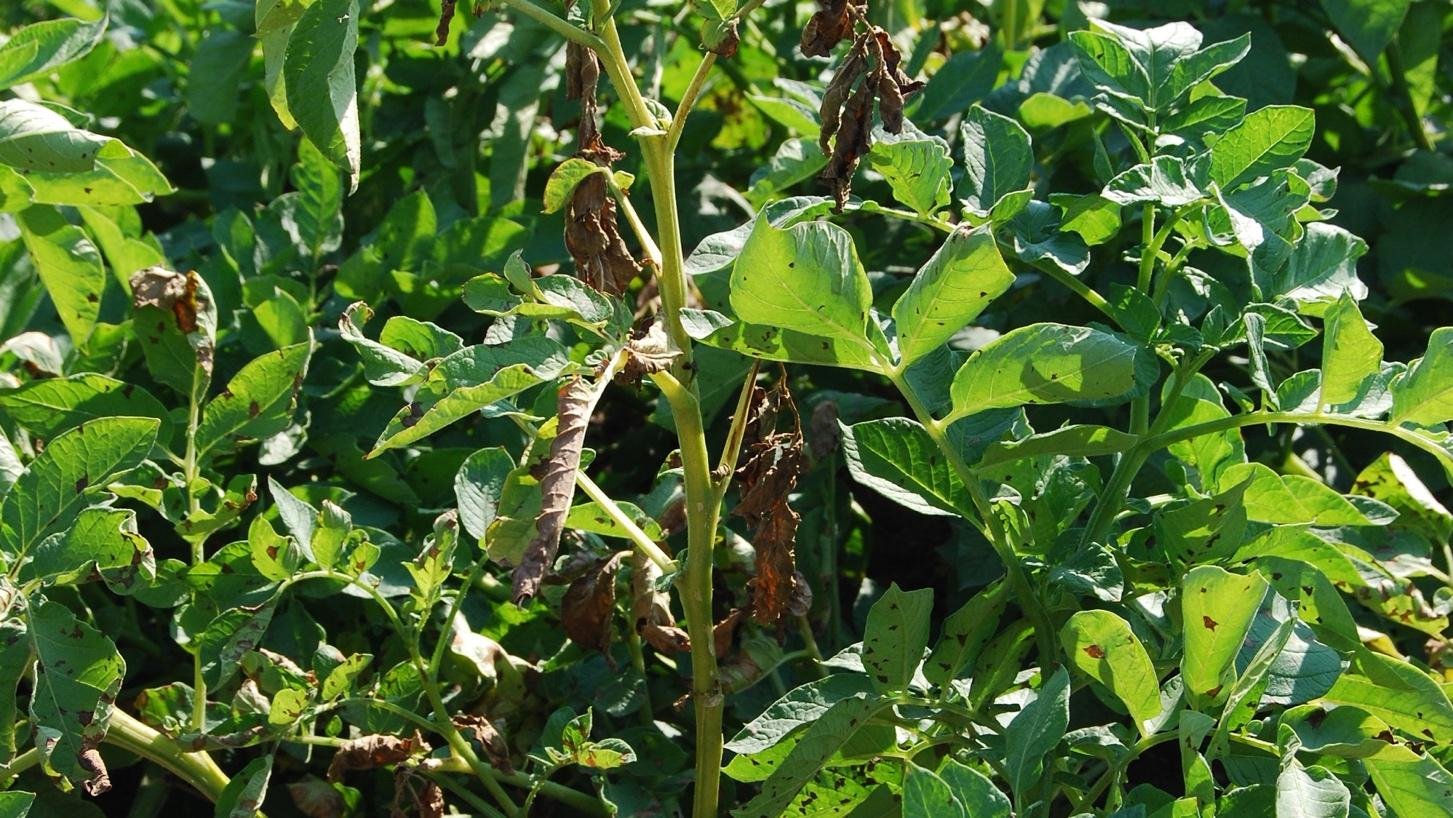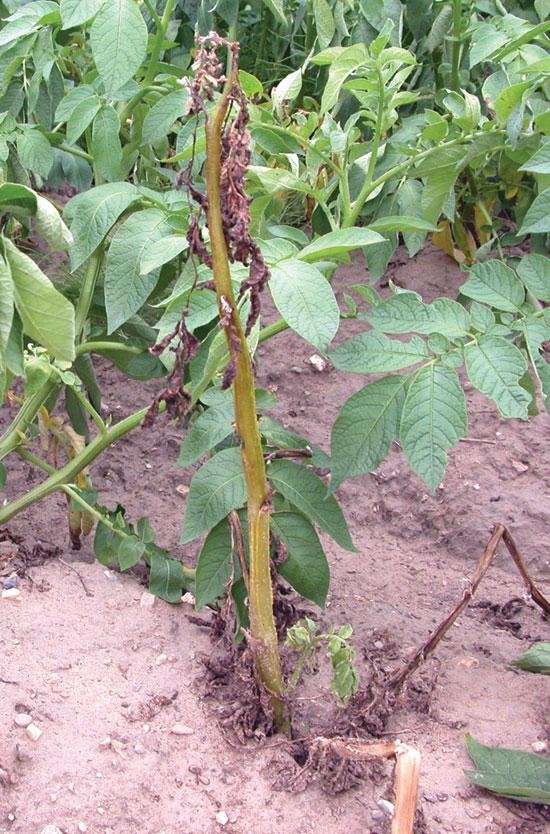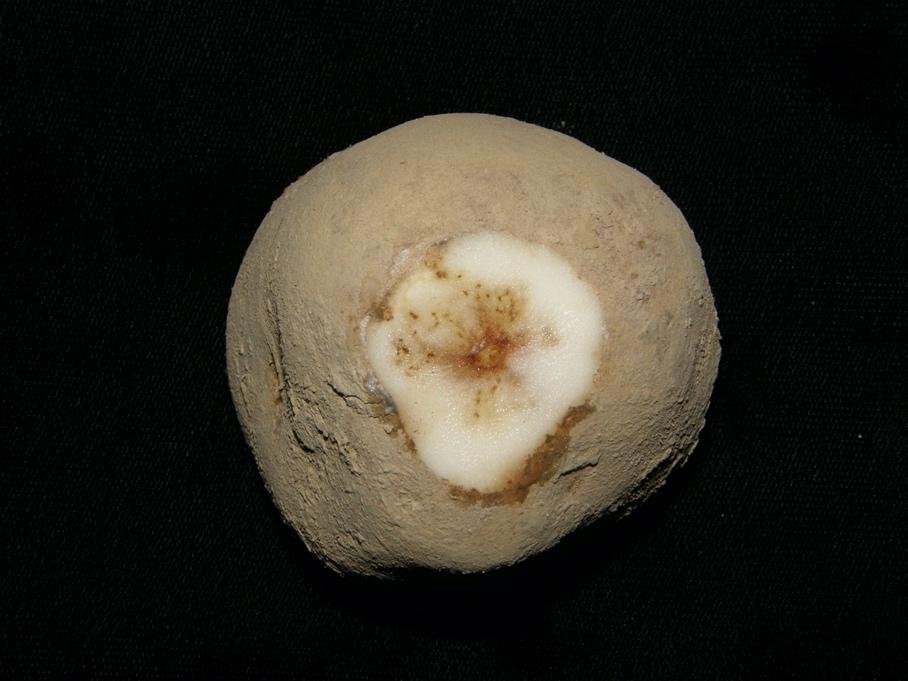Verticillium wilt is one of the most destructive fungal diseases affecting potato crops worldwide. This soil-borne disease can lead to significant yield losses if left unchecked. In this article, we’ll explore the symptoms, treatment, and prevention of Verticillium wilt in potato plants, along with pictures to help identify this problematic disease.
What Causes Verticillium Wilt in Potatoes?
Verticillium wilt is caused by two species of fungi – Verticillium dahliae and Verticillium albo-atrum. These fungi can survive in the soil for many years through structures called microsclerotia. When potato plants are infected by Verticillium fungi, the pathogens colonize the water-conducting tissues (xylem) of the plant. This blocks the movement of water and nutrients, causing the characteristic wilt symptoms.
The disease spreads through contaminated soil infected seed tubers, and irrigation water. Once established in a field, Verticillium is extremely difficult to eradicate fully. Cool wet conditions tend to favor the development of Verticillium wilt.
Recognizing Verticillium Wilt Symptoms
Identifying Verticillium wilt accurately is crucial for effective management. Here are some of the most common aboveground symptoms:
- Wilting and drooping of leaves and stems, especially during the hottest part of the day. Plants recover at night initially.
- Chlorosis (yellowing) of the lower leaves, progressing up the plant
- Early senescence and dying off of foliage.
- Stunted growth and smaller plants compared to healthy ones.
- Brown discoloration of the vascular tissue when stems are cut.
On potatoes specifically, symptoms include:
- Brown discoloration of the vascular ring when tubers are cut in half.
- Dark lesions on stolons and stems near the soil line.
- Premature death of haulms.
- Reduced tuber size and number.
Verticillium Wilt Pictures: Identifying Symptoms Visually
Here are some pictures illustrating the typical symptoms of Verticillium wilt on potato plants:
![Wilting potato foliage][]
Wilting foliage is a classic symptom of Verticillium wilt. Image by Mary Ann Hansen, Virginia Polytechnic Institute and State University, Bugwood.org![Yellowing leaves][]
Lower leaf yellowing spreading up the plant. Image by T. David Reed, North Carolina State University, Bugwood.org. ![Vascular discoloration][]
Brown vascular discoloration when stems are cut. Image by T. David Reed, North Carolina State University, Bugwood.org.![Infected potato tubers][]
Vascular discoloration and lesions on infected tubers. Image by T. David Reed, North Carolina State University, Bugwood.org.
Treating and Preventing Verticillium Wilt
Once Verticillium wilt takes hold, there are no chemical treatments available to cure affected plants. The focus should be on preventive measures to avoid infection and spread of the disease. Here are some key tactics:
- Plant certified disease-free seed potatoes. Avoid saving your own tubers for seed.
- Practice long crop rotations, avoiding potatoes or other susceptible crops in the same field for at least 3-4 years.
- Control weeds, volunteers, and alternate hosts that can harbor the Verticillium fungi.
- Solarize soil or use other methods to reduce pathogen populations before planting.
- Maintain proper soil fertility and avoid excessive nitrogen.
- Water carefully to avoid stressing plants.
- Remove and destroy severely infected potato plants.
- Disinfect equipment regularly to prevent spreading the disease between fields.
Outlook for Verticillium Wilt Management
While Verticillium wilt remains difficult to control fully once present in a field, proactive management approaches can reduce its damaging impact on potato yields. Careful monitoring for early symptoms along with preventive practices are key.
Promising future methods may include developing potato varieties with genetic resistance to Verticillium, soil amendments to suppress the fungi, and novel biocontrol agents. Integrated pest management will be crucial to ensure potato productivity and profitability in the face of this persistent disease threat.
Verticillium wilt is a challenging potato disease, but its impacts can be minimized through vigilant monitoring, accurate diagnosis, and proactive management tactics. Avoiding the introduction of Verticillium fungi is vital. Once present, techniques like extended rotations and soil treatments can help reduce inoculum levels. Early symptom identification coupled with prompt removal of infected plants is critical. By combining preventive cultural practices, data-driven monitoring, and biotechnology solutions, potato growers can effectively manage Verticillium wilt.




Verticillium Wilt : Symptoms, Treatment, and Control for 20+ Affected Plants
FAQ
How do you treat Verticillium wilt on potatoes?
What does Verticillium wilt look like on potatoes?
What are the first signs of Verticillium wilt?
How do you reverse Verticillium wilt?
Can verticillium wilt affect potato crops?
Fortunately, there are management strategies that can help reduce the impact of verticillium wilt on potato crops. The most effective approach is to implement a crop rotation plan that includes non-host plants and disease-suppressive green manures.
What causes verticillium wilt (early dying) on potato?
Potato: Verticillium wilt (Potato early dying) categories: Potato Potato Diseases Vegetables revision date: 2022-12-07 12:00 Verticillium wilt (early dying) on potatoPhoto by: R.S. Byther Biology Verticillium wilt is caused by a fungus commonly […]
What is verticillium wilt?
Verticillium wilt is a soil-borne fungal disease caused by two species of fungi: Verticillium dahliae and Verticillium albo-atrum. These pathogens can survive in the soil for many years, making them particularly challenging to eradicate. The disease affects a wide range of plants, including many economically important crops.
Can fungicides be used to treat verticillium wilt in potatoes?
Fungicide application can be used to manage verticillium wilt in potatoes, but it is not always effective. Fungicides should be applied preventatively before the disease appears. Several fungicides are available for use on potatoes, including chlorothalonil, mancozeb, and azoxystrobin.
What crops are affected by Verticillium wilt?
Verticillium wilt can affect a wide range of plants, including many important agricultural crops. Here’s a list of some commonly affected plants: Tomato: One of the most susceptible crops, with severe yield losses reported. Potato: Can cause significant damage to potato crops worldwide. Pepper: Both sweet and hot pepper varieties are susceptible.
How does verticillium wilt affect plants?
The disease affects a wide range of plants, including many economically important crops. The fungi responsible for Verticillium wilt can spread through various means: Once the fungus enters the plant through the roots, it colonizes the vascular system, blocking water and nutrient transport.
- The Ultimate Guide to Growing Strawberries in Raised Beds - August 8, 2025
- No-Dig Garden Beds: The Easiest Way to Grow a Beautiful Garden - August 6, 2025
- How to Protect and Preserve Wood for Raised Garden Beds - August 6, 2025
